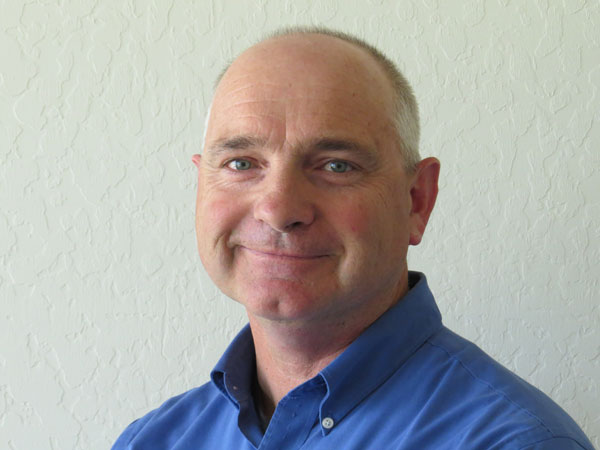Published in the August 30 – September 12, 2017 issue of Morgan Hill Life

Marty Cheek
Until I recently interviewed Brian Bowe, the executive director of the Gilroy Garlic Festival, I had never heard of Giada De Laurentiis. My ignorance of a Food Network celebrity chef practically everyone on the planet — everyone but me — knew existed in the realm of pop culture was a bit embarrassing.
On the Sunday afternoon of this year’s garlic festival, I worked with Clairey Yang, a 15-year-old Monte Vista Christian School student, on a front-page story about the Garlic Showdown which Ms. De Laurentiis emceed. Yang is a big fan of the chef — she’s even kept notebooks of the recipes from nearly every one of her shows. As we sat in the bleachers watching De Laurentiis interact with the five teams as they prepared their meals, Yang explained to me details about the celebrity chef. A woman sitting in front of us overheard our conversation. She turned and gave me one of those eyebrow raises that indicated she thought I must have just arrived on Earth from Krypton.
Fame is funny. People get excited when they meet people of renown. I have a hunch the reason we’re attracted to celebrities is not because of what they accomplished. It’s because we want bragging rights. Encounter a famous actor, singer, athlete, politician, scientist — whatever — and we ask for their autograph or take a selfie with them as proof to our family and friends that we brushed the realm of royalty.
I have been mistaken for famous people. When I was a student at Gavilan Community College, people thought I looked like Tom Cruise (the “Risky Business” version of the actor). Years later, when I lived in San Jose and put on a cowboy hat and boots and went to the Saddle Rack for dancing lessons, people would do a double-take. Many came up to me thinking I was the country singer Garth Brooks. A look of disappointment filled their eyes when I told them I wasn’t. In last year’s presidential election, several people commented on my resemblance to Virginia U.S. Senator Tim Kaine, who was Hillary Clinton’s running mate. I feel a little uncomfortable considering that he and I share the same goofy grin and slightly demented eyes.
If you google “Martin Cheek,” you’ll find results showing there are two famous men in the world I share my name with. One even has his own Wikipedia page — and I’m envious. Martin Roy Cheek, who was born in 1960, works as a renown botanist and taxonomist at the Royal Botanic Gardens, Kew, near London.
The other Martin Cheek found fame in the field of mosaics. According to his website he created the technique to incorporate glass fusions into mosaic art.
Reading the significant successes of my two name doppelgängers, I feel a bit depressed knowing my own life’s accomplishments have been so pathetically insignificant.
As a reporter doing interviews, I have enjoyed access to many people who are famous in their fields. The thing I notice about them is how remarkably unremarkable they are in real life. It’s a cliche, but it’s true that celebrities are really kind of ordinary. When you sit down one-to-one and start up a conversation, you realize you are chatting with a human being, not a demi-god. The gloss of their media-created fame quickly dissolves and you can have a real human moment with them.
In my teenage years, I dreamed of enjoying worldwide recognition as a writer. I imagined myself signing autographs on the title pages of my novels and hobnobbing with the literati and other celebrated people, and drinking a glass of Chardonnay at the mansion pool parties among the Hollywood hills. But that all changed with two brushes with famous folks.
About 10 years ago I was exploring the Santa Barbara Botanic Garden when I encountered actor Dennis Quaid and his wife. They stood alone in romantic gaze, enjoying a private moment holding hands. He and I looked at each other as I approached. I gave a nod, he nodded back. I kept walking. I’ll confess I enjoyed the thrill of a passing few seconds near a Hollywood movie star. But I felt even better that I had behaved as a cool gentleman and not a rabid fan.
A less refined encounter I had with a celebrity took place at the Los Angeles International Airport. As I entered the security gauntlet on my way to a flight bound for San Jose, I started taking off my shoes to put them through the X-ray machine. There was a commotion behind me. Two men with expensive cameras snapped photos of the woman passenger behind me. Security guards ran over. The woman was taken away.
It was down-right weird. I asked the TSA agent what had happened. She explained that the woman was Victoria Beckham. The name didn’t register in my mind and I shrugged. The TSA agent explained she was one of the Spice Girls and married to David Beckham, the soccer star.
On the flight back to San Jose, looking down from my seat at L.A., the home of dreamers pursuing the prize of fame and fortune, I pondered the cost of renown. The price for that prize includes the lack of privacy and the loss of a normal life. When you’re famous, you no longer can just go for a stroll in a public garden or a shopping visit to a local supermarket. Ordinary is out.
Being famous might give some people an ego-stroking, but I love being just another face in the crowd. I truly enjoy the fact that I am not famous. It’s nice to be anonymous.






